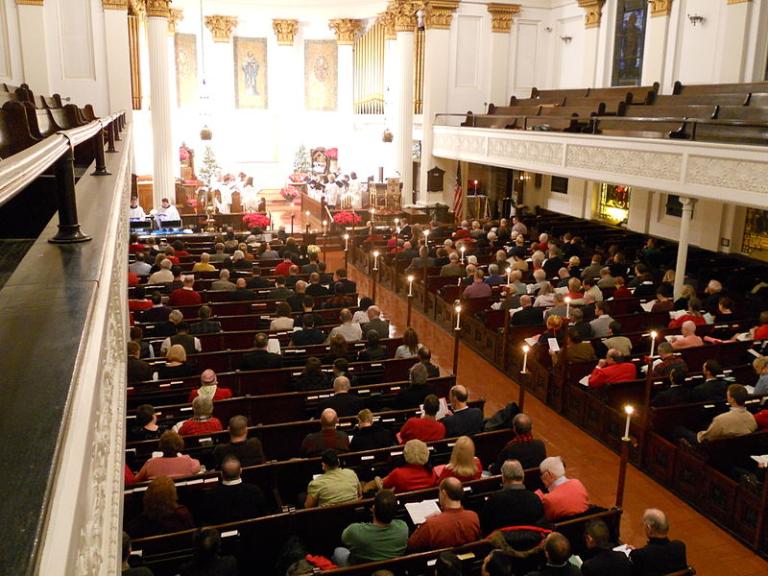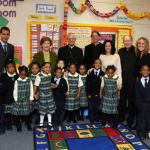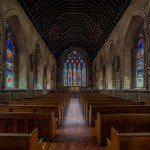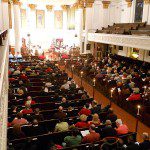
Well, what do you know? I’m not the only one staring at GSS data on religious observance.
There’s a paper out that came to my notice by means of a link in an article somewhere, “The Persistent and Exceptional Intensity of
American Religion: A Response to Recent Research,” by Landon Schnabel and Sean Bock, which, as its title suggests, proposes that religion on America remains exceptionally more intense than elsewhere.
Given that this is a scholarly paper, it references a thesis among scholars, the “secularization thesis”:
The secularization thesis asserts that as a result of ongoing modernization and the advance of science, religion will become increasingly irrelevant in public and private life. This pattern appears to be borne out in several advanced industrial societies where religion has grown increasingly irrelevant in the public sphere and in people’s everyday lives, but whether the United States fits this pattern is less clear.
This thesis is likely something that you’ve heard before, as have I, just not with the scholarly language surrounding it. But what Schnabel and Bock propose is that, rather than religion in general declining, what’s really happening is that
the politicization of American religion in the late 1980s following the rise of the Christian Right . . . may have, as Hout and Fischer (2002, 2014) suggested, driven moderates out of religion but not necessarily decreased the intensity of American religion.
In fact, moderates leaving religion in America could be, at least in part, a reaction against high-intensity American religionists, strict religion, and the contemporary link between religion and right-wing politics in the United States (Djupe, Neiheisel, and Sokhey 2017; Hout and Fischer 2002, 2014).
They look at the General Social Survey on the most intense displays of religion, without regard to particular religious group. They find that, while the percent of Americans saying they had “no affiliation” increased, and those saying “not a strong affiliation” decreased, the percent of Americans reporting a “strong” affiliation stayed constant. In fact, looking at the source data, the rates at the beginning and end of this date range were exactly the same, at 37%. For the younger set, it’s always been lower than average, but, again, in 1990, it was 29% and now it’s 26%. Do those three percentage points mean something crucial? Is 1990 the right year to start measuring? I couldn’t say.
Likewise, they report that the percent of those reporting that they pray “sometimes” is decreasing, but that those who pray “multiple times a day” is increasing, from 23% to 29% in that time period. Among the kiddos, 18 – 34, the figure increased from 14% to 19%.
They also report that sometimes-attenders are decreasing, never-attenders are growing, but the percent attending multiple times a week is increasing — though this isn’t as impressive a piece of evidence, as this is only 7% of the population. But they report that belief in the literalism of the Bible, and similar markers have stayed constant.
They further compare the U.S. to various other wealthy historically Christian countries. In 2008, twice as many Americans reported praying multiple times per day as the next most “prayerful” country, the Netherlands. Similar differences were found in all similar categories, and in many instances, when compared over time, the other countries saw dramatic drop-offs — e.g., in Ireland, the percent praying multiple times per day dropped from 22.4% in 1991 to 10.5% in 2008; in Norway, the rates dropped from 8.7% to 0%.
The data comes from a survey called the International Social Survey Programme, and the data is accessible online. Going back to the church attendance statistic, in 2008, the most recent available year, 25.5% of Americans attended weekly or more, and 7.8% attended more than once a week according to the GSS, and 29.4%/7.9% according to the ISSP. The comparable figures were 7%/1.5% in Germany, 12.4%/4.7% for the Netherlands, 3.2%/1.2% in Sweden, and 8.4%/0.8% in France — all of which includes their respective Muslim populations, which increases attendance rates, as the responses include 14.8% weekly+ attendance in the Netherlands, 30.8% in Sweden, and 16.7% France, among Muslims. (One caveat: this is contingent on my having interpreted the data correctly — but, on the other hand, it looks like a pretty cool data set to explore.)
Now, this paper was already in the process of being published when the Roy Moore scandal erupted. How this will impact perceptions of evangelicals is anyone’s guess — but, on the other hand, as the Babylon Bee reported in satirical form, modern evangelical churches are keeping their denominational identity hidden, so it may well be that even Christians who meet the objective definition of “evangelical” perceive of Roy Moore support as an issue with “those other Christians” and not “Christians like them.”
So it’s all very interesting food for thought.
Image: Church of St. Luke and the Epiphany, Philadelphia (public domain via Wikipedia)













